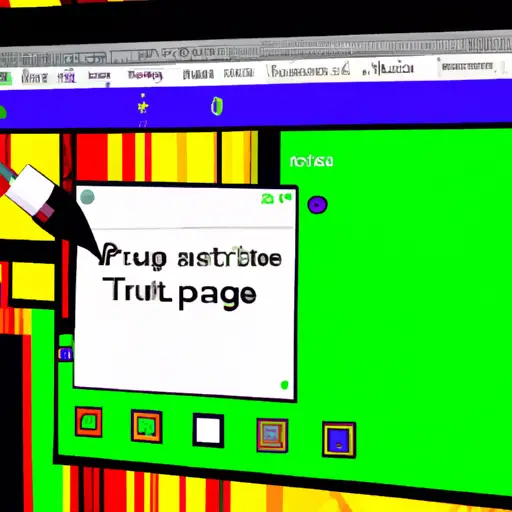Step-by-Step Guide to Taking a Screenshot on Windows Computers
Taking a screenshot on a Windows computer is an easy process that can be done in just a few steps. Here is a step-by-step guide to help you capture the image you need:
Step 1: Prepare the Screen. Before taking your screenshot, make sure that the screen displays exactly what you want to capture. If necessary, adjust any open windows or menus so that only the desired content is visible.
Step 2: Press the Print Screen Key. On most keyboards, this key will be labeled “PrtScn” or something similar and will usually be located near the top right corner of your keyboard. Pressing this key will take a snapshot of your entire screen and save it to your clipboard.
Step 3: Open Paint or Another Image Editing Program. To view and edit your screenshot, open an image editing program such as Paint (which comes preinstalled on most Windows computers). Once opened, press Ctrl + V to paste your screenshot into Paint for further editing if needed.
Step 4: Save Your Screenshot as an Image File (Optional). If desired, you can save your screenshot as an image file by clicking “File” in the top left corner of Paint and then selecting “Save As” from the dropdown menu that appears. From here, choose where you would like to save it and select either JPEG or PNG as its file type before clicking “Save” at the bottom right corner of this window to finish saving it as an image file on your computer for future use if needed!
How to Use the Snipping Tool for Capturing Screenshots on Windows Computers
The Snipping Tool is a useful utility for capturing screenshots on Windows computers. It allows users to capture all or part of their screen and save it as an image file. This guide will explain how to use the Snipping Tool to take screenshots on Windows computers.
First, open the Snipping Tool by searching for it in the Start menu or typing “Snipping Tool” into the search bar at the bottom left of your screen. Once you have opened the tool, click “New” in order to begin taking a screenshot.
You can then select which type of screenshot you would like to take: free-form, rectangular, window, or full-screen snip. Depending on which option you choose, your cursor will change shape and allow you to draw around what you want captured in your screenshot. When finished drawing around what should be included in your screenshot, release your mouse button and click “Save As” from the toolbar at the top of your screen if desired; otherwise simply close out of the window without saving if no further action is needed with this particular screenshot.
The Snipping Tool also offers additional features such as a highlighter tool that allows users to highlight certain areas within their screenshots before saving them; this can be accessed by clicking “Highlighter” from within any snip taken using this tool. Additionally, users can also delay their screenshots up to five seconds after clicking “New” by selecting “Delay” from within any snip taken using this tool; this feature is especially useful when trying to capture something that may not appear until after several seconds have passed (such as a pop-up window).
By following these steps outlined above, users should now be able to easily take screenshots using Windows’ built-in Snipping Tool utility!
Q&A
Q1: How do I take a screenshot on my Windows computer?
A1: To take a screenshot on your Windows computer, press the “PrtScn” (Print Screen) button on your keyboard. This will capture an image of your entire screen and save it to the clipboard. You can then paste the image into any program that supports images, such as Microsoft Paint or Photoshop.
Q2: How do I take a screenshot of just one window?
A2: To take a screenshot of just one window, press “Alt + PrtScn” at the same time. This will capture an image of only the active window and save it to the clipboard. You can then paste this image into any program that supports images, such as Microsoft Paint or Photoshop.
